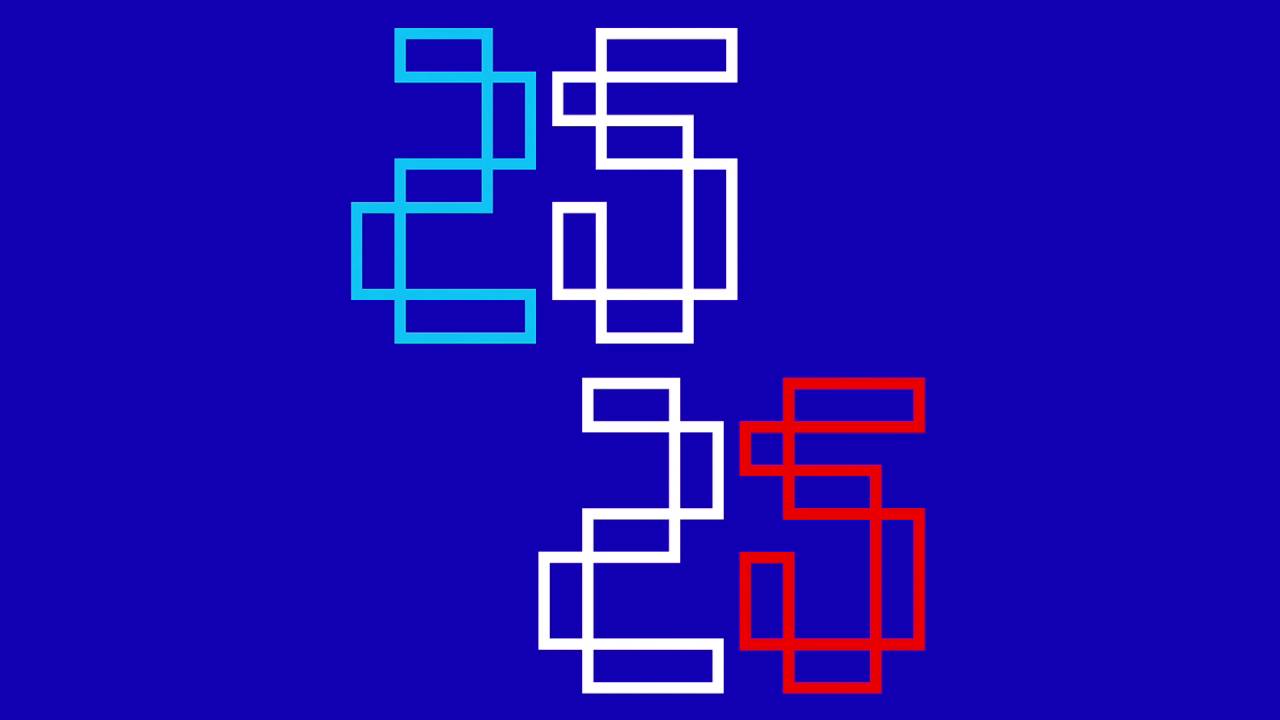I speak to Gabe Gurnsey and Nik Void of Factory Floor on a Tuesday afternoon via Skype and the call is, at least on my end, peppered with silences and stutters – a bit like a Factory Floor track, one might think.
Unlike one of their own tracks though, the call doesn’t leave me feeling like I’ve just taken a wallop to the face with their hearty basslines and unrelenting beats that give the band the substantial kick heard on singles ‘Dial Me In’ and ‘Ya’. Those singles from their upcoming record are expectedly infectious, and the latter track is accompanied by a fittingly minimal music video featuring plaster synths by Void.
Though there’s plenty of space on the singles, it’s not enough to notice the absence of Dominic Butler. For tracks this sparse, they pack an enormous punch and more is to be expected across the rest of the album. Below, Gurnsey and Void catch up with tQ to talk about the making of second album 25 25, internet shopping and the benefit of time zones.
Let’s start with ‘Dial Me In’ – it was the first track you wrote together for the record, could you tell me a bit about the process of writing it?
Nik Void: We set up our base in an old silk mill in a factory up north. We had an area within the building with a PA and our equipment – at that point we had a drum kit and I was still using guitar with electronics and live vocals. That was kind of the first place we started. Obviously, the track is arranged around the vocal line, which evolved from two types of processing that merged yet conflicted with one another to form the sound. That was the track we wrote first off, which was probably done a good few months before the rest of the album, so it shows a bit of a transition from the first record over to the second.
Did you have any particular intentions with ‘Dial Me In’ or with the rest of the record that differed from the first?
Gabe Gurnsey: I think we hoped to keep it more direct and spontaneous, in terms of the way we recorded it. And the writing on this record was definitely more fluid compared to the first. We were playing through a big PA, which was much more immersive.
NV: I think what happened with the record was a series of reactions – we had changed our set up. ‘Dial Me In’ started with a guitar before I switched to a modular synth, which was mainly because I kept bashing my electronics with my guitar. It’s just as simple as that. It was almost like the space and the tools we had on the table designed the sound, and shaped how it was going to emerge. We also had ideas influenced by the clubbier venues and late night slots we were playing as opposed to with the first record, where we found ourselves sort of sitting in places like ATP – shows like that. This record was shaped a bit more by electronic festivals, so there was a real shift in influences.
And what was the shift like to working with new set ups, modulars and other unfamiliar gear?
GG: We were kind of buying bits as we went along, looking for any excuse to go online shopping. We kept getting parcels of things getting delivered every couple of days and so we’d swap and match bits and pieces to figure out what we wanted to use to create stuff. That was a fun process and in a way we were building up our live rig as we were writing the record. It all merged together quite nicely.
So how would you say your live gigs have changed, especially after Dominic Butler’s departure?
GG: It hasn’t really. We always leave a bit to improvisation – we’re not afraid to do that onstage, and that’s key in Factory Floor. I don’t think we’ll ever abandon that. In a lot of ways, the set up we have at the minute will be the same in the future as well. I’ll be going back to drums pretty soon, but we’ll always have that improvisational element in there. It just kind of throws up so many interesting paths for a track to take, something that hasn’t yet been written or cemented in the record. It’s just a really exciting way of working, because you can get feedback from the audience. To let our tracks evolve into different things is really important to us.
NV: The main thing that defines our set, for example, is our choice of equipment. You have to adapt whatever you’ve got in front of you. It’s more free than it was before, when there were still three of us. Now when there’s only two of you, you’re synced together. You almost develop your own kind of language. We’re like a well-oiled machine now, when it comes to like playing in front of a live audience and not really knowing what we’re going to do until we’re onstage.
Has moving out of your north London warehouse space affected the way you work together?
GG: I’d say no, it’s probably easier isn’t it? Nik doesn’t have to spend so much time in my company, which is probably good for her. I’m not sure if it has changed much though; we always seem to end up in some sort of building that we live in and set up our studio in for a while. In a lot of ways it’s a similar environment but with a little bit more focus. We didn’t really have that kind of fluidity in the previous warehouse. It’s not affected me, to be honest.
NV: It affected me. In the old warehouse, the walls were made from MDF, and I was always aware of the fact that other people were around. There was hardly anything separating us from all the other people in the space, so I was kind of conscious that while I was working on stuff people could hear what I was doing. It also affected the length of time we could go on for. Obviously our music is repetitive, which can drive people a little bit insane. But with this space there wasn’t anyone around, so we’d go on a lot longer. We’d let the track breathe for longer and not be afraid of that.
Did you record most of 25 25 in that silk mill?
NV: We tracked the basis for it there – 18 tracks before we slimmed it down. We worked in overdubs in our own spaces. Gabe was in LA and I was in the countryside in Norfolk, so we transferred files between us. It was nice because Gabe was like 7 hours behind me, so I’d send something over email, and after a while he’d have something to play with and vice versa. That distance was helpful in getting the track emptied out. We had a lot of time to reflect in our own space as opposed to being together in a room and fighting over a sound. The way I was editing became quite ruthless.
GG: Yeah, the weird time zone thing is good! It almost added a little time, weirdly. It’s nice to be able to take a step back. We kind of had that distance with the final stage of the album, when we handed it to David Wrench to mix, who was in Wales. The record’s traveled quite a distance, but it just always kept its focus for me.
Nik, you’ve said that Gabe is Factory Floor, and Gabe has said that the group really formed when Void joined. So what do you feel like Factory Floor is now? And where might it be headed?
GG: We were talking about this the other day, funnily enough.
NV: A big fight over text.
GG: I think this is the core of Factory Floor and I think it always will be. We communicate really well when we’re playing together, though not necessarily all the time when we’re speaking on a personal level. I don’t mean it in a bad way, but when we’re working on something together, there’s so much energy and it’s fun. It can go so many different ways. I don’t know what’s to come though – Nik, what are we doing? That was a terrible answer.
NV: With the shows, like the upcoming ICA show, we’re reintroducing the drums but keeping a similar set up. We’ll see how these tracks evolve live, We’ll probably introduce new stuff as we go along. That’s how we work – we test it out live. But as far as Factory Floor goes, I think yeah, it’s become a real partnership now, and this record doesn’t feel like it’s like the ultimate of what we can achieve when we work together as artists.
25 25 is out on DFA on August 19. The duo are set to appear at London’s ICA on August 25, accompanied by Haroon Mirza, Klara Lewis and tQ’s own John Doran



